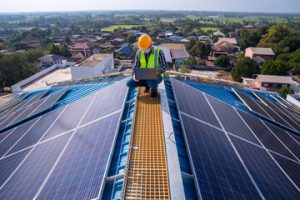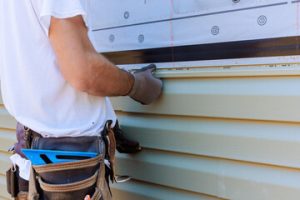Powered by the sun, solar panels can deliver electricity to homes and businesses. They can also be used to power irrigation systems and water desalination plants.

When you install MT Solar panel system, the government and local utilities offer various incentives to make it more affordable. This makes it possible for many people to recoup their investment in just a few years.
Silicon is the semiconductor material used in most solar panels, offering a good balance of cost and efficiency. It’s also the second most abundant element on Earth, making it affordable and readily available. The atoms of silicon form a crystal lattice that is very efficient in absorbing the sun’s energy and turning it into electricity. The crystalline structure of silicon makes it a great choice for solar cells that are made into large modules to power homes or businesses.
The raw material for solar panels is harvested silicon dioxide SiO2. This is melted in an electric arc furnace to remove impurities. This process produces a silicon ingot that is 99% pure. The ingot is then cut into paper-thin slices called wafers. Wafers are encapsulated with other protective layers and assembled to create a solar cell. These PV cells contain a semi-conductor that is sandwiched between two glass pieces. Each cell has silver strips that are placed to receive the released electrons from the silicon’s semi-conductor and conduct all the electricity to a common point.
A layer of a moisture resistant polyester film like Mylar or Tedlar is added to protect the solar panel from damage from different weather conditions that could affect its performance. An aluminium frame is then added to provide structural support to the layered cells.
Alternatives to crystalline silicon include organic solar cells, also known as perovskite cells. They have similar properties and work by using a solution processing method, instead of the ingot production and wafer manufacturing techniques that are needed for silicon. This process allows for the creation of more cells per sheet and increases overall panel efficiency. It also means that these types of solar panels can be produced much more quickly and at a lower price than crystalline silicon PV cells.
They’re Efficient
Solar energy is a clean, renewable source of electricity that has a number of environmental benefits. It reduces carbon emissions that contribute to global warming, and it helps prevent health problems like heart disease and asthma attacks by lowering pollutants in the air. It also decreases stress on the environment and conserves resources.
A solar panel’s efficiency depends on a few things, including the temperature of the sun and the type of panel. The optimum temperature for solar panels is 25 degrees Celsius, which is why most people choose to install their solar systems in warmer climates. The quality of the materials and components used in a solar panel can also affect its lifespan. For example, if the aluminum frame is thin, it’s more likely to break than one that is thicker and stronger. The type of silicon used in a solar panel can also affect the efficiency, with monocrystalline solar panels generally being more efficient than polycrystalline ones.
The orientation and angle of a solar panel can also increase its efficiency. In the United States, it’s best to point them toward true south for maximum exposure to sunlight. However, if that’s not possible, pointing them toward east or west can be a good alternative, although this does lead to a slight reduction in efficiency.
Solar panels can produce electricity on a cloudy day as long as there is sufficient sunlight. However, their overall production is lower on cloudy days. That’s why many homeowners opt for a hybrid solar system that can incorporate battery storage to allow them to use their solar energy during periods of low sunlight, such as the evening and winter time.
They’re Affordable
Solar panels are a smart investment for individuals and communities, providing financial benefits like cost savings on energy bills, increased energy independence, and security. They also help to promote a green economy, create jobs, and lower greenhouse gas emissions. Additionally, these systems require very little maintenance and last for decades.
Compared to fossil fuels, solar energy is a low-carbon, clean-burning source of power that helps reduce carbon monoxide emissions, which contributes to air pollution and can cause health issues like heart disease and asthma. Solar energy is also a renewable resource, making it the safest and most environmentally friendly option available for consumers.
While the upfront cost of solar panel installation can seem high, a personal loan or solar financing allows homeowners to spread out their initial investment over several years. This can make solar energy a viable option for more households, especially when combined with available tax credits and incentives from their electricity provider.
Solar panel costs have been steadily decreasing over the past decade due to improved manufacturing processes, increased competition among multiple solar manufacturers around the world, and government incentives that reduce the effective cost of solar energy for consumers. Furthermore, many homeowners can save even more money by installing solar panels with a battery backup or utilizing energy-saving appliances and home improvements such as cold-climate heat pumps or electric vehicle charging stations.
Aside from increasing your home’s resale value, an added bonus of going solar is that you can save significantly on your monthly energy bills. This is because solar-generated electricity offsets the amount you need to purchase from your local electricity provider. Plus, this new electricity runs through your homes electricity meter just like traditional power does, but without the negative side effects.
They’re Recyclable
Solar power works by harnessing the sun’s blazing heat. The rays are concentrated by mirrors onto a receiver made of strong metal that can withstand and transfer the blazing heat to an engine connected to an electricity generator. This is called concentrating solar power (CSP).
Fortunately, we can reuse and recycle our old solar panels once they’re no longer producing the desired amount of electricity. And it’s not just us consumers who benefit from this recycling initiative—the environment and the supply chain will also reap rewards.
Although solar panel manufacturing is becoming more and more environmentally friendly, discarded PV modules still end up in landfills at a staggering rate. And the harmful materials they contain can wreak havoc on the surrounding ecosystem.
To combat this, manufacturers have been developing new methods of solar panel recycling. Currently, solar panels are typically sent to recycling plants in Europe, where they’re dismantled and the individual components are separated out for further use.
But this is a very challenging process. Solar panels are built to withstand the elements for 30 years, and they’re extremely difficult to dismantle. Plus, they contain a lot of valuable materials such as silver and copper. Unfortunately, these are the hardest parts of a solar panel to recover.
Thankfully, many of the other components in solar panels are easily recycled. Glass makes up 75% of a solar panel’s weight, and glass recycling is already a well-established industry. Aluminum makes up another 10% of a solar panel’s weight, so it’s easy to recycle.
However, the most difficult part of a solar panel to recycle is its encapsulation film. This layer of plastic is designed to protect the solar cell from moisture and other contaminants. And removing it requires the use of toxic chemicals such as hydrofluoric acid, nitric acid, and sodium hydroxide.
They’re Renewable
Solar energy is considered a renewable and green power source because it doesn’t cause harmful environmental side effects like greenhouse gas emissions, which contribute to global warming. However, it is important to note that generating solar energy does have a bit of an impact on the environment because of how solar panels are made. Typically, manufacturing solar panels requires fossil fuels to operate and can negatively affect the plants, animals, and ecosystems in the areas where these factories are located.
When sunlight hits solar panels, the silicon and conductors in them convert that light into Direct Current electricity (DC). The electricity then flows into an inverter, which turns the DC into Alternate Current (AC) electricity. The AC electricity powers your home’s electric loads during the day. During the winter, when the sun isn’t shining as brightly, the amount of electricity your system produces decreases. However, any excess electricity that your solar panels don’t use goes back into the grid for other people to draw from.
There are several different types of solar panels, including monocrystalline, polycrystalline, and thin-film. Each type has its own unique properties, which contribute to their respective efficiencies. For instance, polycrystalline solar panels have a lower price tag than monocrystalline and offer excellent performance in low-light conditions. Thin-film solar panels are also a good option for buildings that have limited roof space because they don’t require as much sunlight to function.
Another alternative to traditional solar energy is concentrating solar power (CSP). CSP uses large tracts of land and mirrors to focus the sun’s heat onto a thermal receiver, which then generates electricity. Because CSP is more expensive than traditional PV, it’s used in more niche applications. Solar energy offers many benefits, such as lower electricity bills and reduced dependence on the power grid. However, it’s important to consider the upfront investment that will be required for solar installation. Fortunately, you can usually expect to see returns on your investment within five to ten years.

